Published: 9 July 2023
Tremor Recommendations
I have Essential Tremor. It is one of the most common neurological movement disorders, being eight times more common than Parkinson's Disease. Approximately one million people in the UK have Essential Tremor. It can begin at any age. I've had it since I was about six years old, but it wasn't diagnosed until much later in adult life.
As a child, people assumed I was just very nervous. As I got older, I've had people assume that I'm drunk and that I lack confidence. My tremor has become progressively worse as I've got older and it now affects my co-ordination and balance.
There are many ways that my tremor affects daily life. Here are some daily life tasks that I find more difficult because of my tremor:
- Preparing food, cutting veg, measuring spoonfuls
- Eating - especially things like peas and sweetcorn
- Writing
- Using a mouse and keyboard on a computer
- Using a mobile phone
- Taking photographs
- Brushing my teeth - well more specifically, putting toothpaste on a toothbrush
- Anything that requires precision and a steady hand - putting the key in the door, threading a needle.
It all sounds very negative but there are things that can help. In this post, I want to share some of the things that I have found helpful. These are my recommendations for living well with Essential Tremor.
Weighted cutlery
Let's start with eating. As well as being essential to life, eating is often a social activity. Many people with Essential Tremor avoid eating out or with friends because, frankly it is rather embarrassing to be constantly dropping food and having people anxiously watch you try to get your fork to your mouth with the food still on it.
I have tried a few different types of anti-tremor cutlery. The problem is, the best ones seem very expensive! The cheaper ones are okay but do look a bit like something you'd find in a care home. I have a bit of an issue with disability-related products always being designed for someone in their late 90s with a fetish for beige. However, I have finally found cutlery that I am happy with.
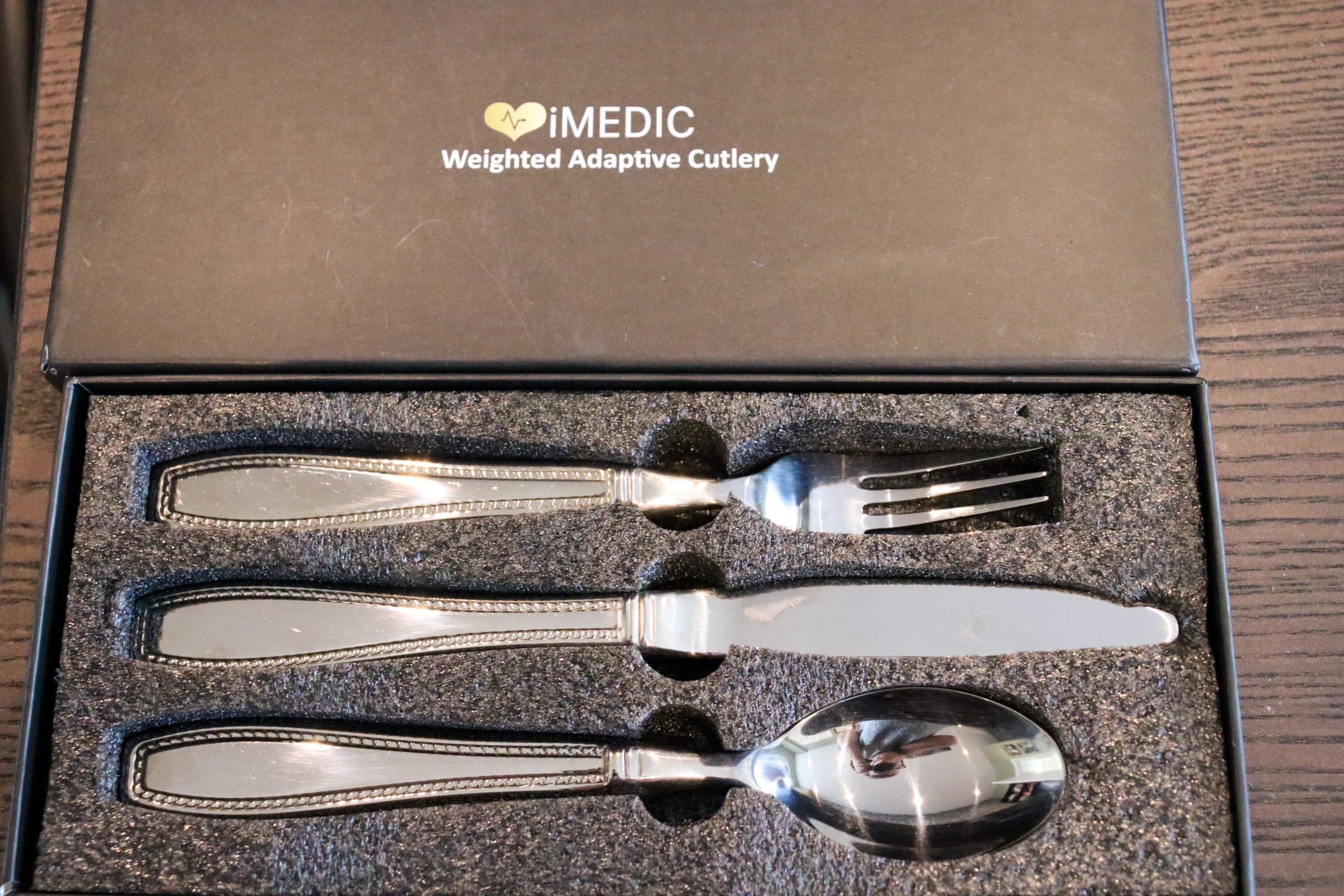
iMedic weighted cutlery (from Amazon) ![]()
What I like about this cutlery set is that they look like normal cutlery. They are weighted but without them looking too different, so they don't attract attention. I also like the box they come in, as it enables me to take them with me to work, a restaurant or wherever I need to be.
Fat pens
Handwriting is something I have always struggled with. As a child, I had extremely neat handwriting but couldn't write very fast. I used to get terrible writer's cramp, making my hand and arm ache. I was always getting told off at school for not writing quickly enough. Whenever I took notes, especially in university, it was so laborious that I got left behind and then found that I hadn't taken in any of the lecture at all. Now, I write much faster but it is barely legible.
My first recommendation regarding handwriting is don't! Really, in this day and age, why put myself through that? For the most part, it's easier to just use a computer. If whatever I write is going to matter, I type it, usually in a Word document. Even cards, when I get round to sending them, are now largely MoonPig, so I don't have to write.
If I do have to write... or for making notes, I try to use a good pen. Again, I have tried so many different ones. I did quite like one that I could get replaceable refills for. It had a contoured barrel and felt nice to write with but the refills didn't last long enough.
I've recently stumbled across these pens. I bought a pack of 5. I like the lanyard, which is removable. It's handy for when I go into an office. What I love though is the barrel size. It is much easier to write without having to grip hard with my fingers. The ink is like a gel pen, so you don't have to press when writing. It's very smooth.
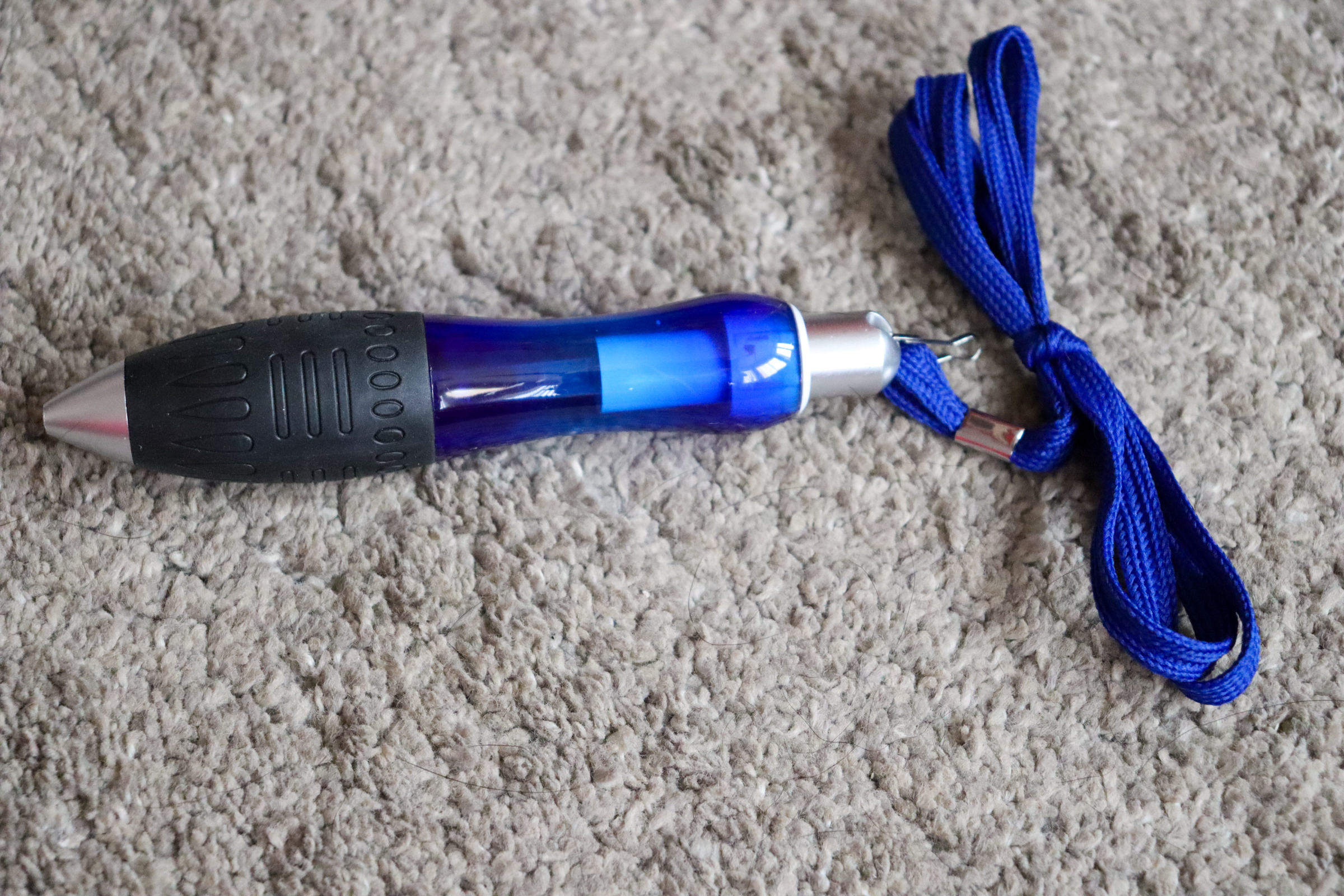
WOSO wide body ballpoint pens (from Amazon) ![]()
Dragon
In order of difficulty, I find the following tasks tricky:
- Writing
- Using a mouse
- Using a keyboard
I write as little as possible. If I can use a computer, that is always my preference.
I use a mouse when my tremors are at their best and when there is no alternative. I find a traditional mouse much easier to use than a built-in laptop mouse. Those tracker pads are very tricky indeed.
I use the keyboard a lot. Keyboard navigation and keyboard shortcuts make my life so much easier, a lot of the time. At some point, I will produce a full user guide on keyboard navigation, as I think it would help so many people who find it hard to use a mouse.
Using my keyboard to navigate is quite easy but typing large amounts of text is more difficult. I often get repeated letters, especially on the characters that I type with my ring and little fingers, as they shake the most. This is where Dragon is great!
Dragon is a piece of software that allows me to navigate by voice and dictate and edit text. It takes a bit of setting up but once you get used to it, it is really good. I have the home edition (which they seem to have stopped doing now) on my personal laptop, and the professional version at work. I'll be honest, the professional version is so much better! It is expensive though.
Dragon's full name is Dragon Naturally Speaking. It is produced by Nuance, which is now owned by Microsoft.
Doogee mobile phone
I find it much easier to use a mobile phone that is heavy and bulky. If I can hold it with my full hand rather than using my fingers, then I can keep it steadier. About two or three years ago, I found this rugged smartphone. It isn't one of the big makes so it does cause some issues when I get asked whether I use Apple or Samsung, as nobody has ever heard of Doogee. Although it is heavy and too big for many pockets, I find this phone easier to use than any I've had before.
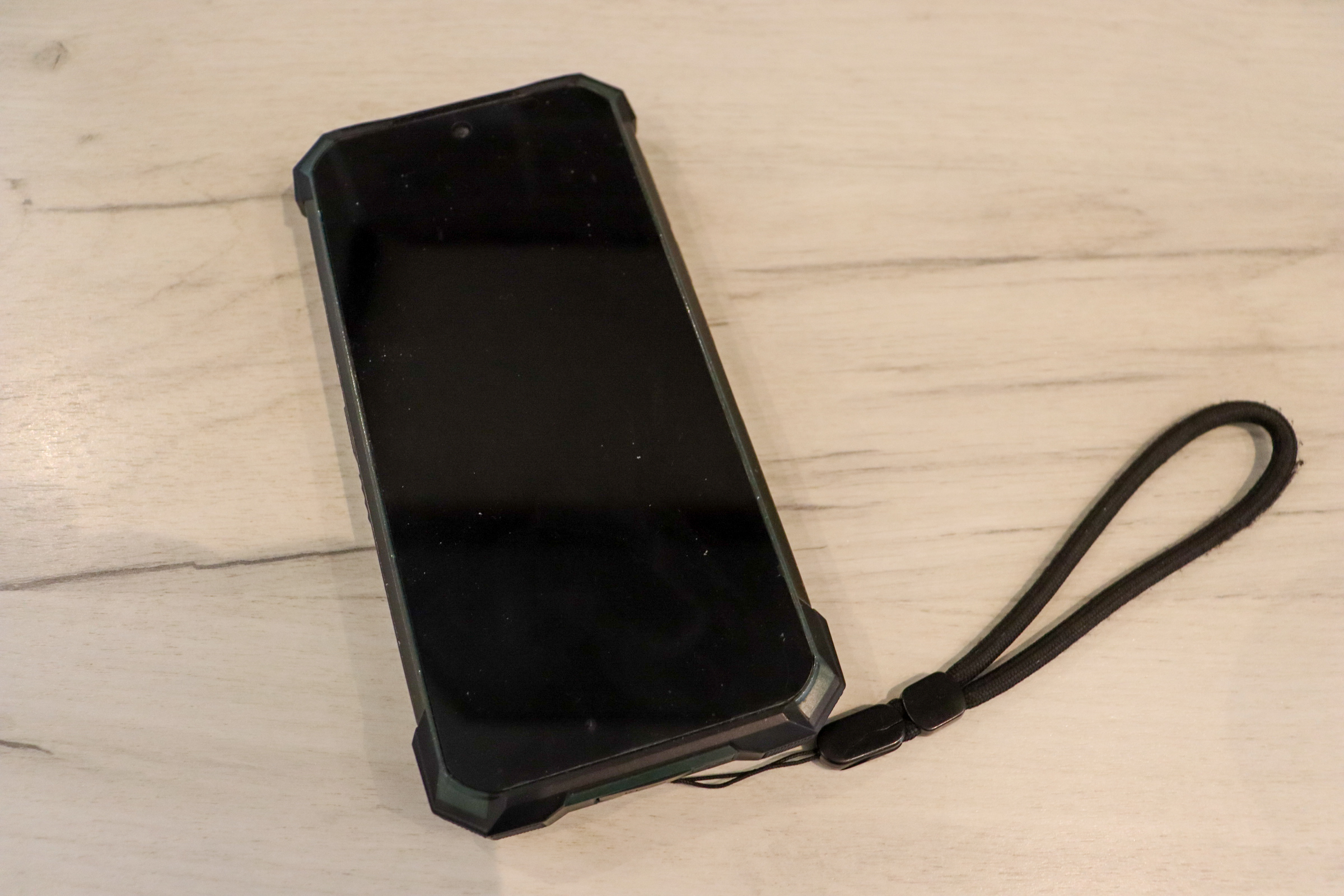
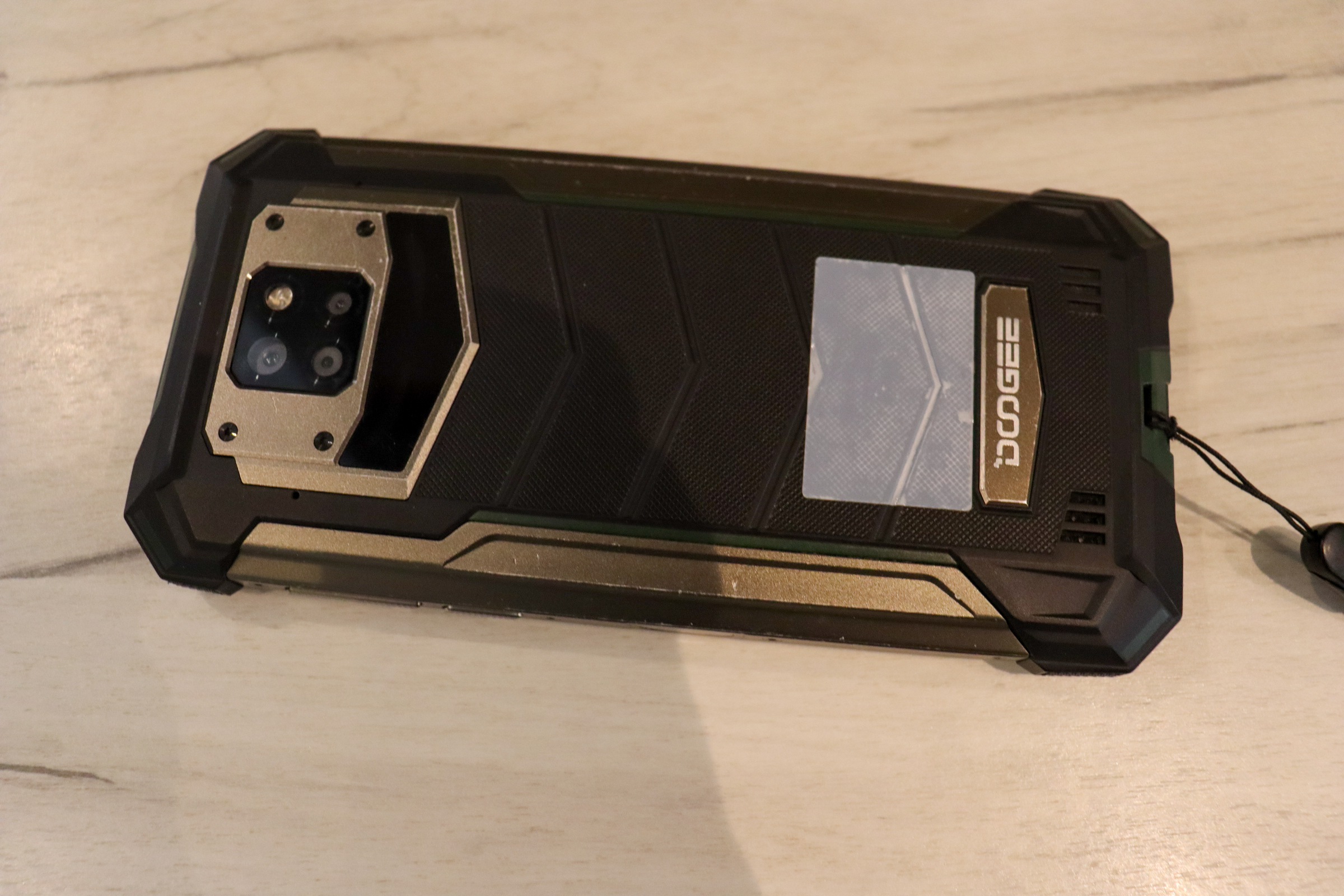
Doogee S88 Smartphone (from Amazon) ![]()
Mine is over two years old, so there is probably a more recent version available now. WhenI need to replace it, I will definitely buy another Doogee rugged phone though. Another bonus is that the battery lasts for days. I've not had battery life like this since the Nokia 3310!
Photography
I love photography, particularly landscape photography. I know that mobile phone cameras have advanced a lot but I still struggle to take a decent photo with any mobile phone. I get much better results with a camera.
I like Canon DSLR cameras. I started with a 450D and have recently upgraded to a 250D. I find these easy to hold and the weight is enough to help stabilise my tremor without weighing me down as I travel.
I also have some little extras, which I find helpful on my bad tremor days:
Image stabilisation lenses
Image Stabilisation (IS) lenses compensate for an unsteady hand. They cost more than the equivalent basic lenses but for someone with a tremor, I think it is worth saving up to buy an IS lens.
Tripod
With a decent camera and lens, I can usually take acceptable quality photos. However, if I'm using slow shutter speed, perhaps in low light or to create movement effects, then I can't hold the camera steady for long enough. This is where a tripod comes in very handy.
You can get tripods in all shapes and sizes, so think about what works for you. As a wheelchair user, I don't want to be lugging round a huge one but there are some good smaller ones with telescopic poles that allow it to stand quite tall.
You can also get a tripod with bendy legs that wrap around things. I even have some wheelchair attachments that allow me to connect my camera to my chair.
Monopod
Okay, so a monopod is not as good as a tripod but it has two benefits. Some places don't allow you to use a tripod, especially if they are busy places. Tripods are generally heavier and bulkier to carry around.

My monopod is light and very small. It fits in the outside pocket of my camera bag and is really easy to just whip out, when I need a little extra stability. Because it doesn't take up space, I've never had any venues tell me I can't use it. It extends to just over one metre, which gives me enough height to stand it on either the floor, my chair or a fence or wall.
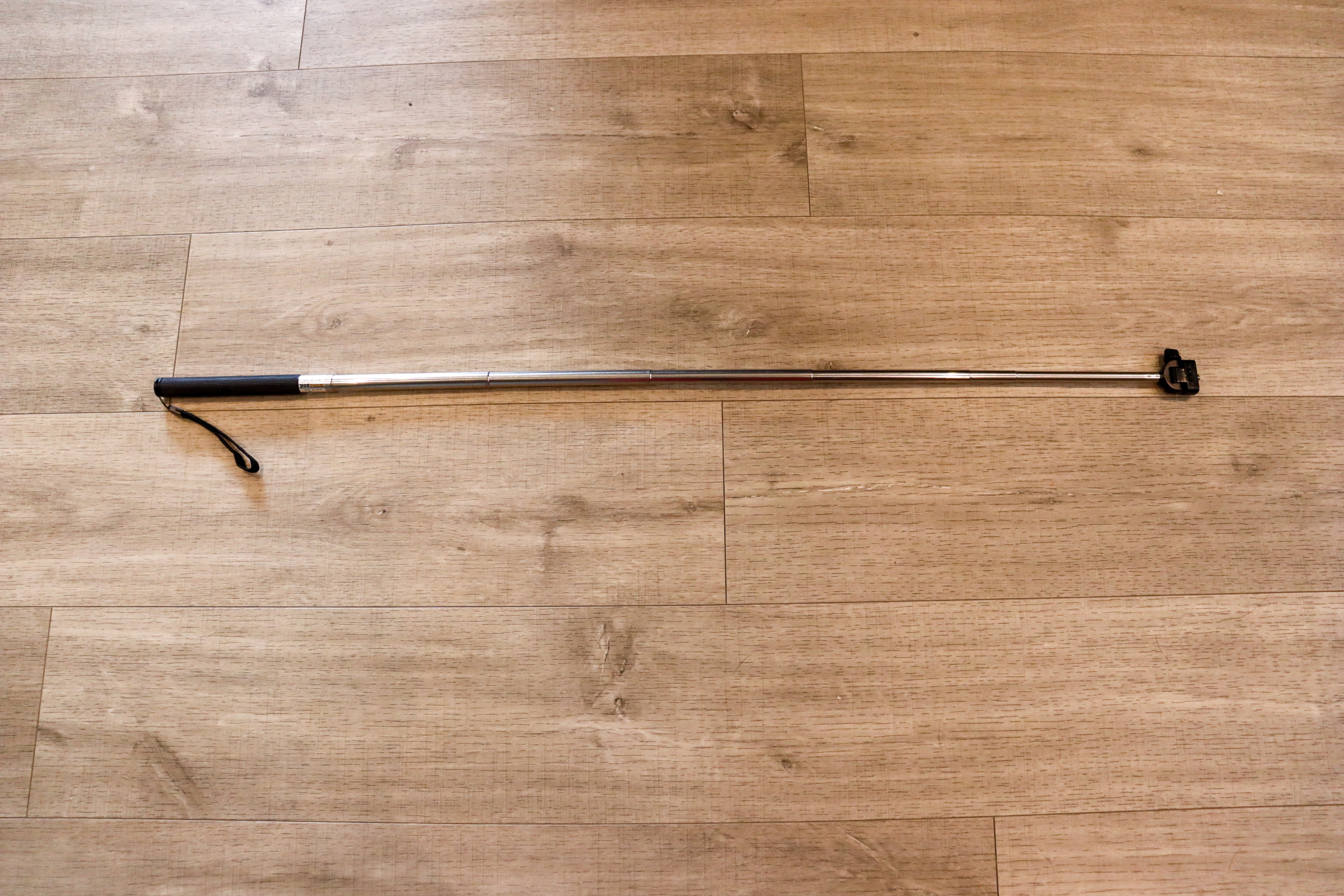
Remote shutter control
There are some situations where any slight movement can seriously mess up your photo. The best example I can think of is photographing the northern lights. This requires a very slow shutter speed of several seconds and any movement of the camera during that time is bad.
My remote control plugs into the camera but allows me to stay well away from it. When I press the clicker, it operates the shutter. It is also handy for taking group photos on a delay. As I don't have to wheel myself from the camera into position within a group. I can usually take the photo with the remote control and then drop it and say, "Cheese."

Summary
The National Tremor Foundation ![]() did a survey of people with Essential Tremor (ET) in 2020. It showed the following:
did a survey of people with Essential Tremor (ET) in 2020. It showed the following:
- 49% said ET impacted their working or professional life
- 54% said it impacted their social life
- 46% said they need help from others to eat and drink
- 30% said they need help to use technology devices
- 61% said it has a negative effect on their self-esteem.
I have found that one of the most important factors in being able to live well with a disability, is in having the right adaptations and equipment to be able to remain independent and continue to do the things I enjoy doing. For me, a lot of that is more connected to my mobility but daily living is also a big thing. The items I have recommended won't be right for everyone but if you also have a tremor, they may help you too.
Whatever your disability, I would strongly encourage you to find ways of doing the things you enjoy, though that may require adaptations. Don't be afraid to tell others why you need different stuff to them. The more disabled people come out and live life in the open, the more aware other people will be... and most people are very supportive and inclusive.
